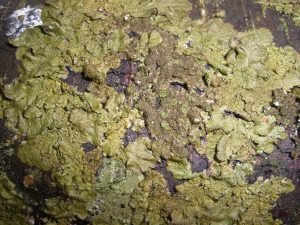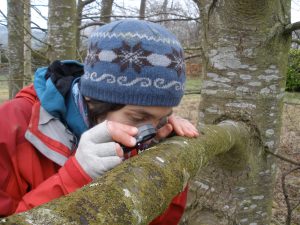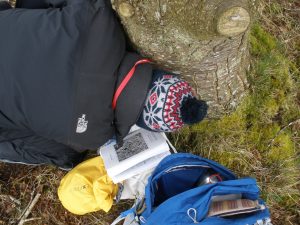Today as part of my survey on lichens as indicators of air quality we head out of the city to the foot of the Pentlands, well almost. Bush Estate. We are looking for a cleaner air site and there, in the middle of a field somewhere is one of the 91 air quality monitoring stations that are positioned across Scotland.
Grid reference and co-ordinates checked we arrive at the spot and start looking out for a slightly odd looking grey or green shed-like box that is the Bush Estate monitoring station. None can be found. We check the co-ordinates again, and wonder if in fact this estate has been built up since the time of the monitoring station… this station certainly has data from much further back than many of the stations in the centre of Edinburgh City. The earliest records are from 1986.
After some hunting we approach the Centre for Ecology and Hydrology (CEH) building. CEH is the UK’s Centre of Excellence for integrated research in terrestrial and freshwater ecosystems and their interaction with the atmosphere. Surely they’d have some idea of where it would be.

Bush Estate Air Quality Monitoring Station managed by CEH Source: www.scottishairquality.co.uk
Sure enough the shed-like box, or in this case more of a portacabin surrounded by several complex looking instruments is sitting pretty in the middle of a field behind the CEH building. A friendly welcome followed by an invitation to actually view the internal workings of the station brings to light the extraordinary monitoring that is occurring on a 24/7 basis.
The number of whirring instruments held within the hut also explains the slightly unearthly sound that I’d heard being emitted from other monitoring sites around the city!
A clump of as yet un-identified trees stands just a few meters away from the monitoring site and we begin to assess and survey the lichens we find. Here, away from roads, tucked in a field protected by hedges, other trees and buildings we find a wonderful array of lichens covering the trunks, branches and twigs.

Melanelixia fuglinosa – common throughout Britain, mainily found on trees or fences, rarely on rocks.
With my mentor Dr Chris Ellis supporting this outing it’s a great chance to practise my ID skills. Especially as each of the four trees we survey have very similar lichens on them – with a mixture of crustose (crusts – firmly attached to tree and not easily detached), foliose (leafy- frequently attached by root-like hairs) and fruticose (bushy – usually only attached at one point).
Maybe because part of the work that occurs at CEH involves various types of monitoring and surveying, no-one seems to bat an eye lid as we hug the trees (measure their girth) and crouch to stare very closely at the tree trunks for long periods of time.
Part of the Edinburgh Living Landscape initiative & the TCV Natural Talent scheme


